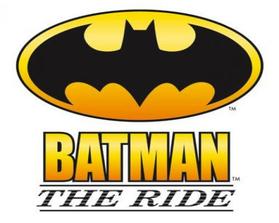Specific Type: Suspended Looping Coaster
|
In the year 2000, Six Flags Inc. decided to go international as it continued to expand its growing chain of regional theme parks. South of the border, they acquired Reino Aventura (Adventure Kingdom), situated on the south side of Mexico City, and rebranded it as Six Flags Mexico. Wanting to make a big impression in the new market, Six Flags poured $30 million into the transformation, making this the largest theme park in Latin America. At the core of these improvements were two brand new roller coasters. At the front of the park, a massive, 105 ft tall wooden monstrosity was created by Custom Coasters International and given the nameMedusa. The back of the park would boast the first inverted roller coaster in Central America.
In 1992 when Swiss manufacturer Bolliger and Mabillard first introduced the inverted coaster concept with their first Batman the Ride installation at Six Flags Great America everyone took notice. Soon rival manufacturer Vekoma would come up with their own compact inverted coaster model, the SLC (Suspended Looping Coaster). Six Flags would purchase three of these models in 1997 and two more the following year. Then in April of 2000, another Vekoma SLC would be purchased, this one for Six Flags Mexico. This installation of the popular clone would be named Batman the Ride, thought not to be confused with the B&M clones that bear the same name at many other Six Flags parks. In addition to having a vastly different layout than the B&M model, the Six Flags Mexico version of the ride also has much less in the way of theming, with just a single Gotham City-esque building the the middle of the layout. Those who want to embark on this crime fighting flight with the Caped Crusader can find the ride in the far back-right corner of the park. Entering into the queue line beneath the shadow of the coaster's 100 ft first drop, future riders meander through the twisted layout, watching those already on board scream their way through five inversions. Soon they are in the station and boarding the twenty person trains, track above their heads, feet dangling helplessly beneath. The ride starts off with a 110-foot climb up the rides lift hill, at which point the train banks to the right and swoops down in a curving drop towards the ground. Just feet above the ground, and reaching speeds of nearly 50 mph, the train ends its highly banked and swooping first drop, straightening out and then pulling up into a double-inversion called a Roll Over. The inversion essentially consists of a half-loop, followed by a reversed in-line roll (starting and ending upside down), and finishes with a half loop that runs parallel to the entrance of the inversion. From here, the track rises and banks almost completely sideways, putting the train nearly perpendicular to the ground before the train dives down to the left into a shallow trench parallel to the station. Pulling out of the trench, the train enters its third inversion, the Sidewinder, also called an Immelman Loop. Exiting this inversion, the train twists to the right and pulls through a tight, 270-degree rightward helix that flows straight into a Double In-Line Twist, the last two inversions on the coaster. The train then rises slightly and banks heavily to the right again, dropping to the ground again before twisting and rising slightly into the final break run, ending the 2,260-foot long ride. |
©1998-2016 COASTER-net.com, All Rights Reserved.


